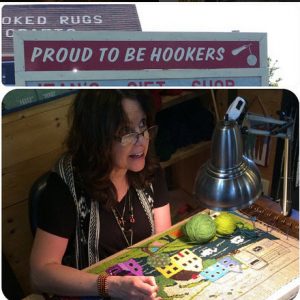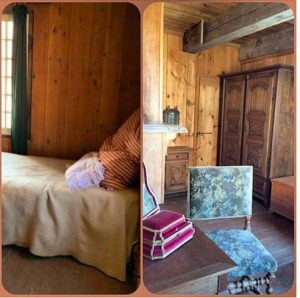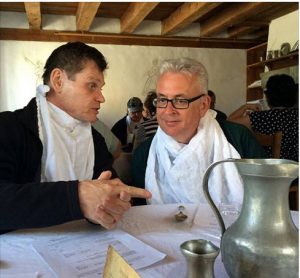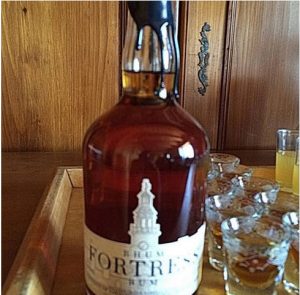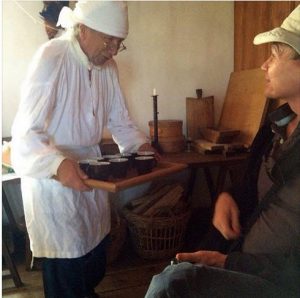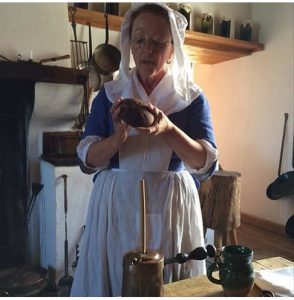Tag Archive
activity architecture art artist building Canada children city CostSaver downtown drive i-95 entertainment Europe event exhibit family festival Florida food fun historic History landmark local Museum music Nature New Zealand Ontario roadtrip sculpture Seattle show sights sightseeing tour tourist Trafalgar travel travelblogger view Washington Washington State water world
Canada: Cape Breton, Nova Scotia – Frog Pond Cafe
The Frog Pond Cafe in Cheticamp, NS has coffee, pastries, snacks, a gift shop and wonderful Cape Breton hospitality.
Canada: Cape Breton Island, Nova Scotia – Rug Hookers
Lola is one of the hookers in this hooked rug shop on Cape Breton Island. She has been hooking for 44 years.
Canada: Cape Breton, Nova Scotia – Yummy Lobster Dinner
Noisy lobster dinner at Baddeck Lobster Suppers. The fish chowder was loaded with large yummy pieces of every fish you can name.
Canada: Cape Breton, Nova Scotia – Sleep on a Straw Mattress
When visiting Fortress Louisbourg in Nova Scotia, you have the opportunity to sleep in an authentic 18th century home. Reach out to Parks Canada to set it up but be aware that in that era, they slept on straw mattresses (you can throw a sleeping bag on top, though). Test yourself to see if you can live without electricity. In Rodrigue House, this is the bigger room, fine for the lady. The other smaller room had 2 single beds.
Canada: Cape Breton, Nova Scotia – Dine in the 18th Century
When dining in 18th century, your napkin is worn as a bib. Great idea. We should start a trend. Here at the Fortress Louisbourg in Cape Breton, Nova Scotia, you can dine on a traditional meal in authentic style with costumed servers.
Canada: Cape Breton, Nova Scotia – Typical Meal in the 18th Century
In the eighteenth century at Fortress Louisbourg, Cape Breton, Nova Scotia, the lower class diet included locally prepared bread, spruce beer, meat or fish. Staples like butter, cheese, and rum were imported. Here I dined on pea soup and an apple tart for dessert. They ate with spoons. Gathering for a meal was not only for sustenance but also for news, companionship and games of chance.
Canada: Cape Breton, Nova Scotia – Smooth Rum
Fortress Louisbourg, Cape Breton, Nova Scotia, is producing smooth rum – a drink that would have been downed by rich and poor in the 18th century. Don’t forget to bring it home as a souvenir. Every time you feel the smooth liquor go down, you’ll remember your trip – and how lucky we are to live in this century. To buy it, just ask for Fortress Rum, what else?
Canada: Cape Breton, Nova Scotia – Perfume Court
Before you enter Fortress Louisbourg, Cape Breton, NS, you can visit a fisherman’s cottage and learn about their lives in the 18th century. Perhaps they were the lucky ones living outside the walls, for the aboriginals said you could smell the fortress before you arrived as soldiers rarely bathed and there were no toothbrushes. Aboriginals stayed way outside the fortress. Now we know why Louis XV court was called the “perfume court” as they needed to cover up the human aromas.
Canada: Cape Breton, Nova Scotia – Chief Engineer
Etienne Verrier was chief engineer for Fortress Louisbourg from 1725 to 1745 and lived here, in one of the most imposing homes. The military engineers were town planners, architects and construction engineers. They laid out the streets, planned the fortifications, designed all the colony’s public buildings and influenced military tactics in the sieges. He was wealthy enough to be able to serve cocoa to his guests. A pound of cocoa cost the same as a pair or shoes. The cocoa was served hot with spices and sugar and was used medicinally and for warmth and strength.
Canada: Cape Breton, Nova Scotia – Chocolate for the Wealthy
Chocolate was hugely expensive in the 18th century and a pound would cost the same as a pair of shoes. You had to be wealthy to be able to serve cocoa to guests. the cocoa was served hot with spices and sugar and was used medicinally and for warmth and strength. Both women and men drank it. Ladies thought it was energizing. More than two centuries later, I think we still agree about that.

